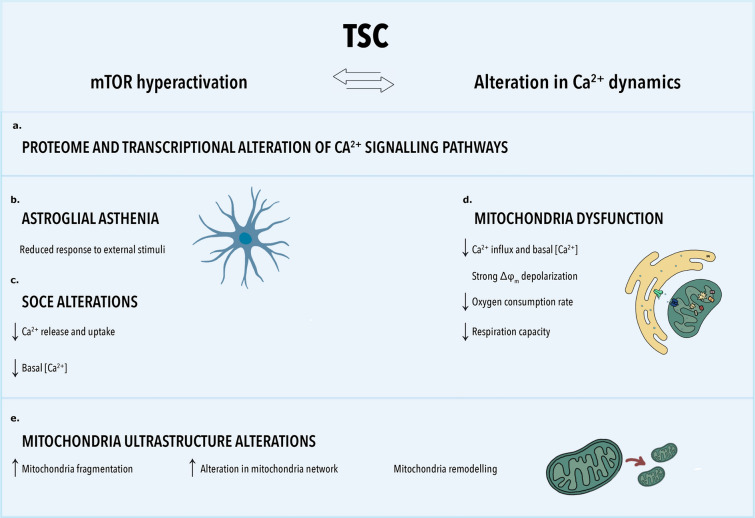Fig. 10.
The mTOR hyperactivation in TSC patients results in strong alteration of calcium dynamics within the cells and multiple organelles. a. Proteomics analysis of TSC primary astrocytes culture and bulk RNASeq analysis and single-cell RNASeq of TSC patients derived material showed substantial alterations in pathways associated with cellular respiration, ER and mitochondria, Ca2+ regulation, and calcium-dependant neurotransmitter signaling, in addition to the well-established dysregulated immune response in TSC. b. TSC primary astrocytes culture showed a reduced response to external stimuli. c. TSC primary astrocytes culture showed dysfunction of store operated calcium entry (SOCE). A reduction in basal [Ca2+]c levels was observed after SERCA blockade, and further Ca2+ stimulation suggest a dysregulation of release from the ER and SOCE in TSC astrocytes. d. TSC primary astrocytes culture showed mitochondrial dysfunction due to reduced calcium influx and efflux, strong depolarization of mitochondrial membrane potential (Δφm), reduction in oxygen consumption rate and respiratory capacity e. Mitochondria ultrastructure alteration identified in astrocytes via electron microscopy analysis in TSC tissue. Astrocytes showed an alteration of relevant morphologic parameters which suggest increased mitochondria fragmentation, alteration in mitochondria network and structural remodeling. TSC tuberous sclerosis complex, mTOR mammalian target of rapamycin, SOCE store-operated calcium entry

